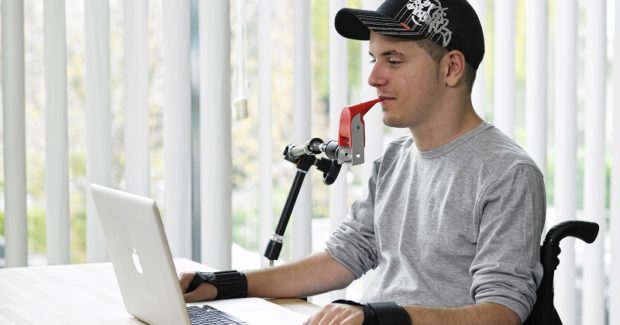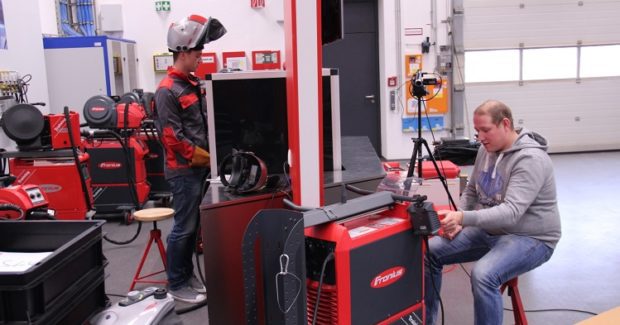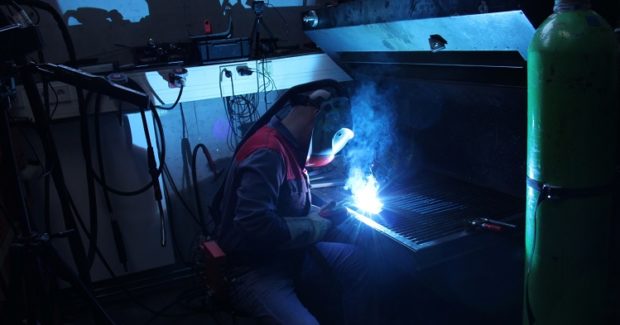Using Voice Input to Control Welding Systems
This voice control system developed by Fronius and their partners enables welders to use verbal commands to set amperage, arc length and other parameters without any interruption of the welding process.
Posted: May 31, 2019
Welders in action and people with high paraplegia have one thing in common: they lack the ability to control devices easily by hand. This common ground was the starting point for a cooperation project between Fronius International GmbH (Pettenbach, Austria), Campus Hagenberg of the University of Applied Sciences Upper Austria (FH OOE; Mühlkreis, Austria), and LIFEtool (Graz, Austria). Their solution: to control welding systems and computers through voice input. “Welding Interaction in Future Industry” or “WIFI” is the title of the research project. Its purpose was to develop alternative interaction solutions for the field of industrial welding that not only support welders, but also people with reduced strength or paralysis of the arms and legs. WIFI received one of the three Science Award for Inclusion (WINTEC) honors for 2018 from the Austrian Federal Ministry of Labor, Social Affairs, Health and Consumer Protection.
Welders need both hands to guide the torch, their gaze must remain with the arc at all times, and any movement of the fingers can cause an inaccuracy in the seam. “Up to now, there has not been a system that allows welders to completely set various parameters, such as amperage or arc length, without there being any interruption of the welding process. An alternative form of parameter input could make the welder’s life considerably easier,” said Helmut Friedl, a project manager at Fronius. “This problem is comparable to that of people who can only use their hands to a limited extent as a result of a stroke or accident, or those who are paraplegic,” added Mirjam Augstein, a researcher at Campus Hagenberg. “With the help of the WIFI interface, however, they are able to operate computers or power sources without having to use their hands.”
The control method works with the help of voice commands. “We have developed a voice control system based on the needs of both target groups that will be used in industrial welding equipment and as a supplement to LIFEtool’s mouth-controlled computer mouse,” explained Augstein, a professor who teaches the Communication and Knowledge Media course at FH OOE. This allows the welding process to run efficiently and gives people with disabilities access to new fields of activity. Voice control offers people with physical impairments the opportunity to play computer games and participate in e-sports events. “The WIFI project shows that industry can benefit from our experience in the field of assistive technologies,” stated Karl Kaser, the head of research and development at LIFEtool, who sees great potential in this cooperative relationship. “At the same time, systems and aids for people with disabilities could become cheaper in the future if they are produced in large quantities for industrial use.”
For more information, look at other advances in welding automation and also subscribe to F&M.
Fronius USA LLC, 6797 Fronius Drive, Portage, IN 46368, 219-734-5701, [email protected], www.fronius.com.

















